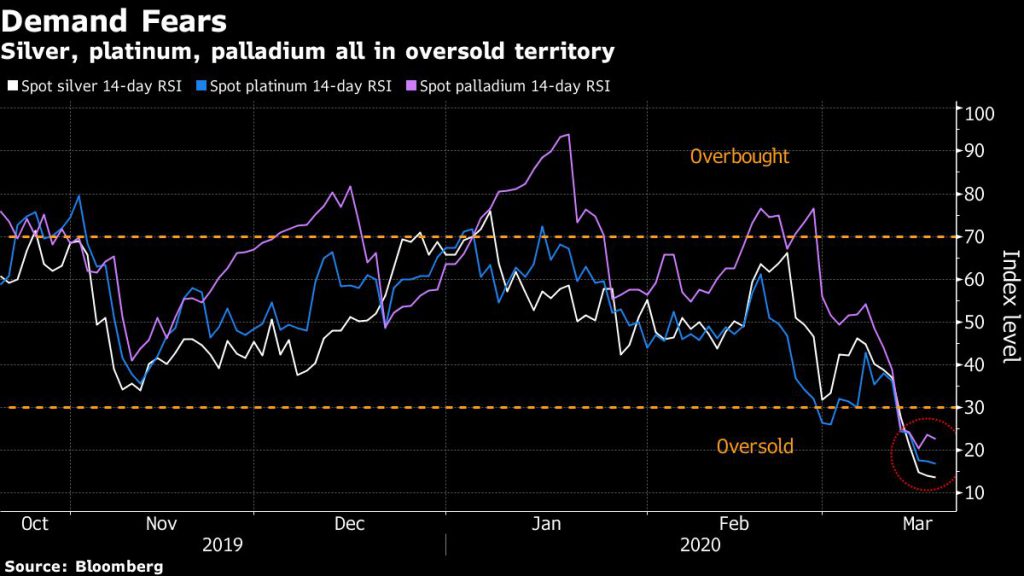
Gold is going through the wildest price swings since the 2008 financial crisis as global markets convulse on fears over the coronavirus.
The CBOE Gold ETF Volatility Index, a measure of expectations for price swings tracked through exchange-traded fund moves, has more than doubled over the past six sessions to the highest since November 2008. That’s as policy makers worldwide tried to introduce stimulus measures to counter the economic impact of the outbreak.
Futures have slumped more than 5% this month as investors cash in on earlier increases in gold as losses pile up in risk assets such as equities
Prices erased earlier gains following declines in U.S. stocks on Wednesday, as investors sold gold in a rush for cash to cover losses elsewhere. A stronger dollar and lower inflation expectations are also eroding bullion’s appeal. Broader markets are also getting whipsawed, with the Cboe Volatility Index near a 30-year high.
“Volatility remains the dominant scenario on markets with gold proving no exception,” Carlo Alberto De Casa, chief analyst at ActivTrades, said in an emailed note. “We are seeing a positive (direct) correlation between stock markets and gold, which should not be a big surprise as every time there is a sharp market fall, many traders are using gold as their cash machine in order to keep other positions open that are being hit by margin calls.”
Gold futures for April delivery fell 3.1% to settle at $1,477.90 an ounce at 1:32 p.m. on the Comex in New York. That’s nearly $200 lower than last week’s closing high. On Tuesday, the metal rose as much as 4.6%, fueled by a U.S. plan to spend as much as $1.2 trillion to provide economic support.
Meanwhile, the Federal Reserve reintroduced additional crisis-era tools to stabilize financial markets. In Germany, Angela Merkel said the government will not rule out joint European Union debt issuance.
Futures have slumped more than 5% this month as investors cash in on earlier increases in gold as losses pile up in risk assets such as equities. A collapse in inflation expectations, amid fears over slumping economic activity and the prospects of a global recession, has also reduced demand for the metal.
Other precious metals also declined, with silver’s 14-day relative strength index dropping to about 12 — deep into oversold territory. In a normal situation, that would be a sign to some traders of a possible rebound soon.

However, silver may remain under pressure, said Ole Hansen, head of commodity strategy at Saxo Bank A/S.
“Its record discount to gold will only start to come down when the fiscal spending impact begins to stabilize the demand outlook.”
Silver declined on the Comex, while platinum and palladium futures fell on the New York Mercantile Exchange. The metals for immediate delivery all fell.
Palladium and platinum are also under added pressure. China, a major consumer of palladium used in pollution-control devices, was reported to explore relaxing some emissions standards to provide relief for carmakers amid falling demand. Car sales in Europe are off to their worst start to a year since 2013 and are poised to deteriorate further. And the big three U.S. automakers are pausing production at North American facilities.
“We are facing a major demand shock as car sales and consumer confidence take a major hit,” Hansen said. “The key to the short term outlook is whether the long liquidation phase has run its course. Considering we continue to see lower highs i believe that we may not yet have seen all the selling.”
(By Justina Vasquez, Elena Mazneva and David Stringer, with assistance from Ranjeetha Pakiam)
Comments